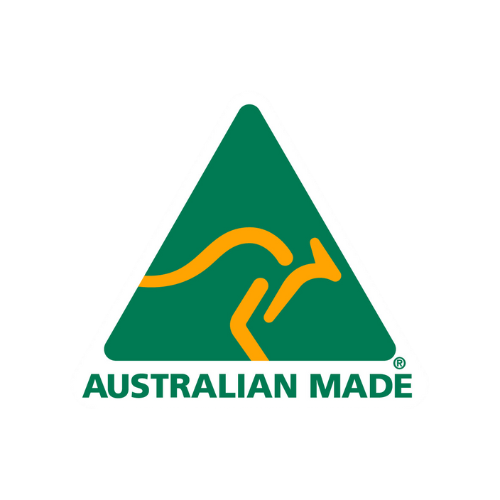How to Keep Your Bed Allergen Free?
For those of us who suffer from dust and dust mite allergies, we know that the quality of our bedding can make a world of difference. Choosing the right materials and effectively using protective bedding, such as mattress toppers can both help win the battle against dust mites. Here at Puradown, we pride ourselves on producing bedding products that protect against common allergens through the Hypo-Allergenic properties of our materials.
When it comes to bedding, ensuring cleanliness is also paramount in preventing allergies and maintaining a healthy sleep environment. Washing our bed sheets, quilts and pillows are all measures we can take to prevent irritation in the night. But, how often should we wash our sheets and how can we ensure we wash our quilts and pillows effectively?
In this guide we will be breaking down the specifications of materials that can protect from allergens and how to best maintain your bedding, keeping your bed allergen free.
Typical Allergens in Bedding
Bedding can harbour a variety of allergens, including dust mites, pollen, pet dander and mould. These allergens can trigger allergic reactions such as sneezing, itching, congestion and even skin irritation. Regular washing of bedding is essential to remove these allergens and create a clean sleep environment.
How Often Should You Wash Your Sheets and Bedding
It is recommended that you wash your bed sheets once a week to minimise the build up of dust, dead skin cells and other environmental dirt. If you are an allergy sufferer, you might consider washing your sheets more frequently to eliminate common irritants. Using a hypoallergenic detergent and washing your sheets at a high enough temperature will ensure that they come out fresh and allergen free to be used again!
Washing our bedding can seem like a daunting task but is crucial in combatting allergens in our bed. At Puradown we offer a pillow and quilt cleaning service, making this task even easier. We recommend giving your bedding a rejuvenation through our service once a year, to ensure that your bedding's materials are maintained and your bed deep cleaned.
Regularly cleaning your mattress using a vacuum cleaner and a soft furnishing attachment will help to remove dust and dust mites from your bed. By investing in a quality mattress topper you can also prevent allergens from building up in your mattress and transferring to your sheets. Puradown's mattress toppers offer a high quality barrier between your sheets and your mattress, preventing dust mite exposure during your sleep.
Hypoallergenic vs. Anti-Allergy Bedding
Hypoallergenic bedding is designed to minimise the risk of allergic reactions by preventing the buildup of allergens. It is often made from materials that are naturally resistant to dust mites and other allergens. On the other hand, anti-allergy bedding is treated with chemicals or additives to repel allergens and prevent allergic reactions.
When choosing between hypoallergenic and anti-allergy bedding, consider your specific allergies and sensitivities. Hypoallergenic bedding made from natural materials may be a preferable option for those with sensitive skin or respiratory issues, as it avoids exposure to potentially irritating chemicals.
Choosing the Right Material
When it comes to alleviating skin allergies, the material of your bedding plays a significant role. Here is a breakdown of the main hypoallergenic materials used in bedding that can help with your allergies across different budgets.
| Benefits | Downsides | |
| Silk |
|
|
| Bamboo |
|
|
| Tencel |
|
|
| Japara Cotton |
|
|
Ultimately, the choice of bedding material depends on your preferences, budget, and specific allergy concerns. Whether you opt for luxurious silk or eco-friendly bamboo, selecting hypoallergenic bedding ensures a restful and allergy-free sleep environment.
Why do we use Japara Cotton at Puradown?
Japara cotton is the natural choice for the luxury bedding products we offer at Puradown. The hypoallergenic benefits of this material offer a comfortable sleep experience for all whilst also ensuring a durable and 'down-proof' product that will have a longer lasting high fill count.
We believe in the durability of our bedding and offer a 5-year warranty on all of our products, meaning that we will replace or repair anything that is deemed unsatisfactory. Through our quilt rejuvenation service we can re-cover your quilt with our Japara Cotton for an instant, long lasting upgrade.
Puradown’s Hypoallergenic Duck and Goose Down
Puradown offers a unique solution for allergy sufferers with its duck and goose down quilts and pillows. Through a special treatment process, Puradown down products are rendered hypoallergenic, making them suitable for even the most sensitive individuals. This treatment ensures that the down clusters are free from allergens while retaining their plushness and insulation properties.
By choosing Puradown duck and goose down bedding, you can enjoy the comfort and warmth of down without worrying about allergic reactions. Our products are ethically sourced and crafted to the highest standards, providing a luxurious sleep experience for all.
Take a look at our range of hypoallergenic bedding to keep your bed allergy free.

